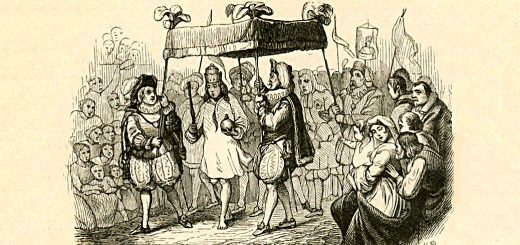Michael Steinhardt – Variant Perception

Today’s post is a profile of Guru investor Michael Steinhardt, who appears in Jack Schwager’s original Market Wizards. His chapter is called Variant Perception.
Michael Steinhardt
Michael Steinhardt’s interest in the markets began with a gift of stock from his father on his bar mitzvah.
- After graduation he went straight to Wall Street, working as a research assistant, financial journalist and then as a research analyst.
In 1967, he started his first firm with two other partners – also analysts.
- They left around a decade later.
I became the trader for the firm, [despite] having had very little trading background. I probably wasn’t as good an analyst as the other two.
When I first started trading, it was like taking candy from a baby. The amount of intellectual power on the trading desks twenty years ago was minimal.
The institutional traders were typically kids from Brooklyn, who could hardly speak the language, made a minimum amount of money, and had very little discretion.
Steinhardt appears in Jack Schwager’s original Market Wizards.
- His chapter is called Variant Perception.
Performance
In the 21 years to Schwager’s interview, Steinhardt Partners had a gross compound return of more than 30% pa (just under 25% pa after the 20% performance fee).
- Over the same period the S&P 500 returned 8.9% pa.
These returns turned $1 into $93K ($6.4K for the S&P 500).
- There were two losing years, each less than -2%.
Trading style
Steinhardt uses a variety of approaches:
- long and short term trades
- long and short positions
- stocks and bonds.
The interview began with a discussion of trading versus investing.
- Steinhardt sees himself as an investor, because when he buys he has not target or timescale for selling.
- Schwager sees him as a trader because he goes short, and he is more concerned with the direction of the market rather than just picking the best stocks.
Steinhardt is a straighforward contrarian:
I try to develop perceptions that I believe are at variance with the general market view, and play them until I feel they are no longer so.
I only talk to [my] people when their stocks are not acting like they should. I try to assume that the guy on the other side of a trade knows as least as much as I do. It is incumbent on me to find out what his perception is.
There are certain shibboleths that exist in the world of trading, which but I have not followed them.
I don’t use stop-loss orders. I don’t use any rules about buying on weakness or strength. I don’t look at breakouts. I don’t use charts. I don’t have any rules about objectives.
No formula
As I look back on the past twenty-one years, there is no set pattern of successful activity. In some years, we did particularly well on the strength of a few well-chosen stocks. In other years, we did exceptionally well because we were on the right side of the market.
Steinhardt’s big wins include buying Treasury bonds in the early 1980s just before the interest rate peak, and shorting the Nifty Fifty in the early 1970s.
- He did less well during the October 1987 crash.
Anyone who thinks he can formulate success in this racket is deluding himself, because it changes too quickly. As soon as a formula is right for any length of time, its own success carries the weight of its inevitable failure.
Recognize that this is a very competitive business, and that when you decide to buy or sell a stock, you are competing with people who have devoted a good portion of their lives to this same endeavor.
Forget the shibboleth that stocks are going to give you a higher rate of return because they are more risky. They are more risky; therefore, you have to be convinced that you are going to get a higher rate of return in order to play the game.
Mistakes
Good trading is a peculiar balance between the conviction to follow your ideas and the flexibility to recognize when you have made a mistake.
When you make a mistake, there is some subconscious phenomenon that makes it less likely for you to make that same mistake again.
One of the advantages of trading the way I do – being a long-term investor, short-term trader, individual stock selector, market timer, sector analyst – is that I have made so many decisions and mistakes that it has made me wise beyond my years as an investor.
Buy and hold
Buy-and-hold is too limiting a strategy. The objective of participating in the long-term growth of American equities, willing to suffer through those periods when equities decline, is fine.
But it leaves so much on the table in terms of potential professional management. It is an incomplete strategy.
More and more people are paying attention to market timing, not that they are necessarily qualified to do it terribly well, but because they have come to recognize what a buy-and-hold approach means.
We have lost confidence in the long term.
Shorting
In the twenty-one years that I have been doing this, our overall exposure here has averaged about 40% net long. I remember being 15 or 20% net short at one point, and, at another time, being over 100% net long.
There is a general view that you shouldn’t short a stock until it has already peaked and started down. My attitude has always been that to make money, you have to be willing to get in the way of danger.
I have always tended to short stocks that were favorites and backed by a great deal of institutional enthusiasm.
I have tended to short too early, but as long as my variant perception is unchanged, I’ll stay short. I might trade around the position to take the pressure down a little bit.
I have tried [hedging using another stock in the same industry], but have generally found it to be unsuccessful. If your problem is so great that you need to hedge it, why not address the problem directly?
If I wanted to be short the tobacco companies because I felt consumption was going to decline much more than presently perceived, then if the market rallied, I would have to take advantage of it and sell some more.
But if the news was terrible and the stocks were up, I would try to understand why. Sometimes the market has more information.
Conclusions
This is another interesting interview, but contrarian styles tend to be individual and the skills are hard to transfer to the regular private investor.
- Steinhardt’s basic style is that he disagrees with the market about something, and he backs his judgement with a bet until he is proved either right or wrong.
This approach will be absolutely fine for a minority of investors, but it’s hard to teach to someone who doesn’t feel it intuitively.
Also, as Schwager points out:
You can’t be a successful contrarian by just using sentiment survey numbers or other measures of bullish consensus.
Although sentiment is always very bullish at tops and very bearish at bottoms, unfortunately, extreme bullish and bearish readings are also characteristic of extended trends.
The trick is not being a contrarian, but being a contrarian at the right time.
Flexibility as a response to a constantly evolving market is a key feature of Steinhardt’s style.
- A fixed approach is doomed to failure at some point.
Another characteristic is a willingness to bet big when a good opportunity comes along.
Until next time.


















